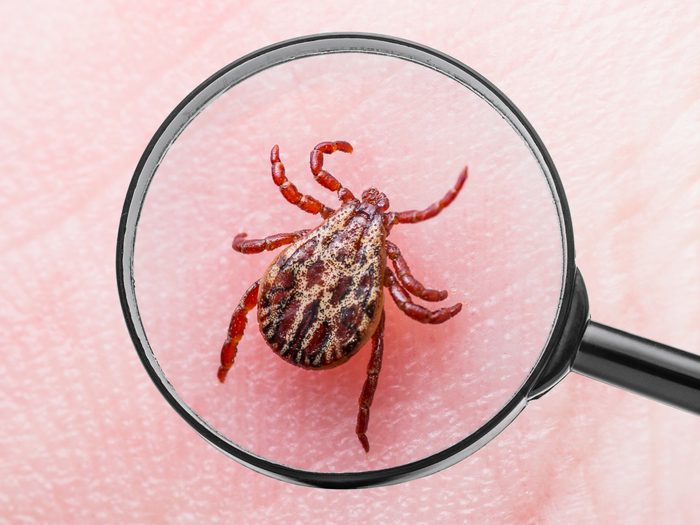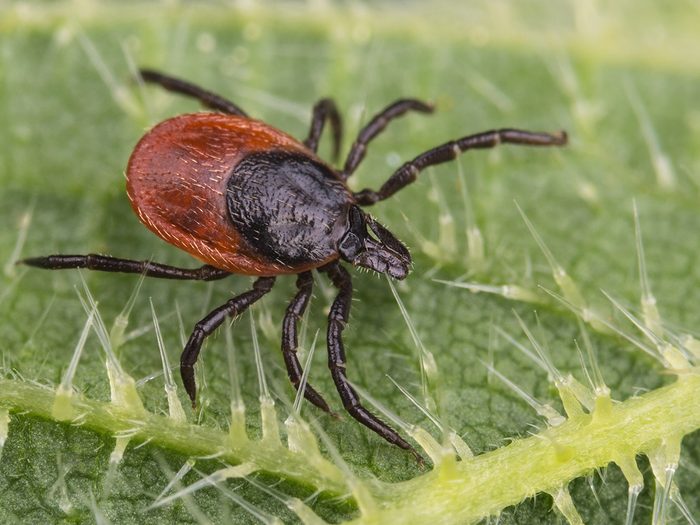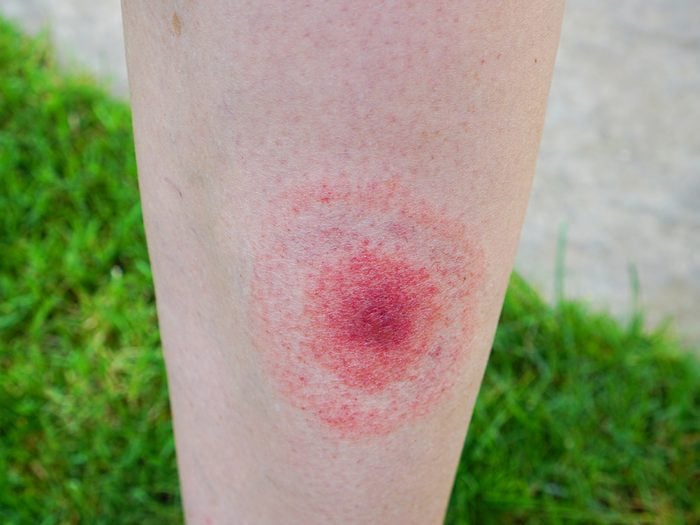
Myth: Smothering a tick is the best way to remove it
Fact: The only really suitable removal procedure involves tweezers. Attempting to burn or suffocate a tick can actually stress it and cause a greater release of saliva, increasing the risk of disease transmission.
Here’s are the do’s and don’ts of tick removal:
- Use tweezers to remove a tick, grasping the bug as close to the bite site as possible.
- Don’t twist as you remove. Pull directly up.
- Clean the site of the bite with soap and water.
- Don’t waste any time. If you’re in the wilderness and without tweezers, use your fingers if you must.
- Submit the tick to your local health authority for testing. [Source: Canada.ca]

Myth: It’s dangerous to leave the head behind when you remove a tick
Fact: If a piece is left in your skin, it’s likely the mouth—ticks don’t have separate heads. Wash your skin with soap and water, and if the mouth doesn’t come out easily, don’t worry—it will work its way out on its own.
Find out how ticks became a major threat to our health.

Myth: All ticks carry Lyme disease
Fact: In Canada, blacklegged ticks (also called deer ticks) and western blacklegged ticks (found in British Columbia) are thought to be the only ones that have the bacteria that cause Lyme, and not all of them are carriers.

Myth: As soon as a carrier bites you, you’ve got Lyme disease
Fact: It takes at least 36 to 48 hours to transmit the bacteria, so if the tick has been attached for only a few minutes or hours, you won’t develop an infection.
Here are 20 symptoms you should never ignore.

Myth: You need a bull’s eye rash for a diagnosis of Lyme disease
Fact: Up to 80 per cent of patients will get a rash at the site of the bite, but it only sometimes looks like a bull’s eye.
Sadly, Lyme disease isn’t the only thing you have to worry about this summer. Brush up on the various tick borne diseases that are on the rise.